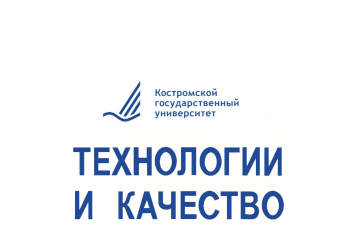- 11
- THE RELEVANCE OF THE ROLE OF MODERN CORPORATE UNIFORM IN PROMOTING THE COMPANY'S MESSAGE
- Denisova O. I., Denisov A. R. The relevance of the role of modern corporate uniform in promoting the company’s message. Technologies & Quality. 2024. No 4(66). P. 65–70. (In Russ.). https://doi.org/ 10.34216/2587-6147-2024-4-66-65-70.
- DOI: https://doi.org/10.34216/2587-6147-2024-4-66-65-70
- УДК: 687.152
- EDN: ZLAZQX
- Publish date: 2024-10-30
- Annotation: The article examines the trends in the formation of the design image of uniform models, related to the demand for the communicative and semantic function of this type of clothing. Despite the fact that uni-form design was used for non-verbal transmission of messages in the last century, an example of which are the developments of Soviet constructivists, the significance of this role of uniform was usually not emphasized. However, mathematical models obtained on the basis of the application of the author’s method of identifying and analyzing trends in corporate fashion allowed us to establish that the company's communication interaction through the symbolic language of uniform occupies an important place among modern trends. At the same time, as the results of the study showed, the need to promote messages through uniform design is most characteristic of companies with a high degree of “maturity” – promising developing companies focused on the corresponding progressive target audience.
- Keywords: communicative and semantic function, current trend, design, trend analysis, mathematical model, dress code, formalization, corporate style
- Literature list: 1. Pesha A. V. Uniforms in public catering establishments in Russia: a retrospective aspect. Kostyumologiya [Costumeology]. 2017;2,3. URL: https://kostumologiya.ru/PDF/01KL317.pdf (accessed 23.09.2024). (In Russ.) 2. Denisova O. I., Denisov A. R. Identifying and analyzing the main trend in corporate uniform design. Tekhnologii i kachestvo [Technologies & Quality]. 2024; № 1(63): 64–69. (In Russ.) 3. Kaiser S. B., Nagasawa R. H., Hutton S. S. Construction of an SI theory of fashion: Part 1. Ambivalence and change. Clothing and Textiles Research Journal. 1995;13(3):172–183. 4. Denisova O. I., Denisov A. R. The problem of conveying a company’s message through the non-verbal language of corporate uniforms. Tekhnologii i kachestvo [Technologies & Quality]. 2023;1(59):54–60. (In Russ.) 5. Aleksushin G. V., Mikhailova Yu. V. The appearance of the staff as an element of branding of accommodation facilities. Skif. Voprosy studencheskoy nauki [Skif. Issues of student science]. 2021;11(63):36–40. URL: https://sciff.ru/wp-content/uploads/2022/01/Sciff_11_63.pdf (accessed 23.09.2024). (In Russ.) 6. Leonov M. E., Karpov A. V. Elaborating of the concept of staff motivation through corporate style clothing. Aktual’nyye problemy aviatsii i kosmonavtiki [Actual problems of aviation and cosmonautics]. 2017;13(3):377–379. (In Russ.) 7. Denisova O. I., Surzhenko E. Ya. Cultural analysis of the evolution of business corporate fashion. Tekhnologii i kachestvo [Technologies & Quality]. 2022;3(57):56–60. (In Russ.)



